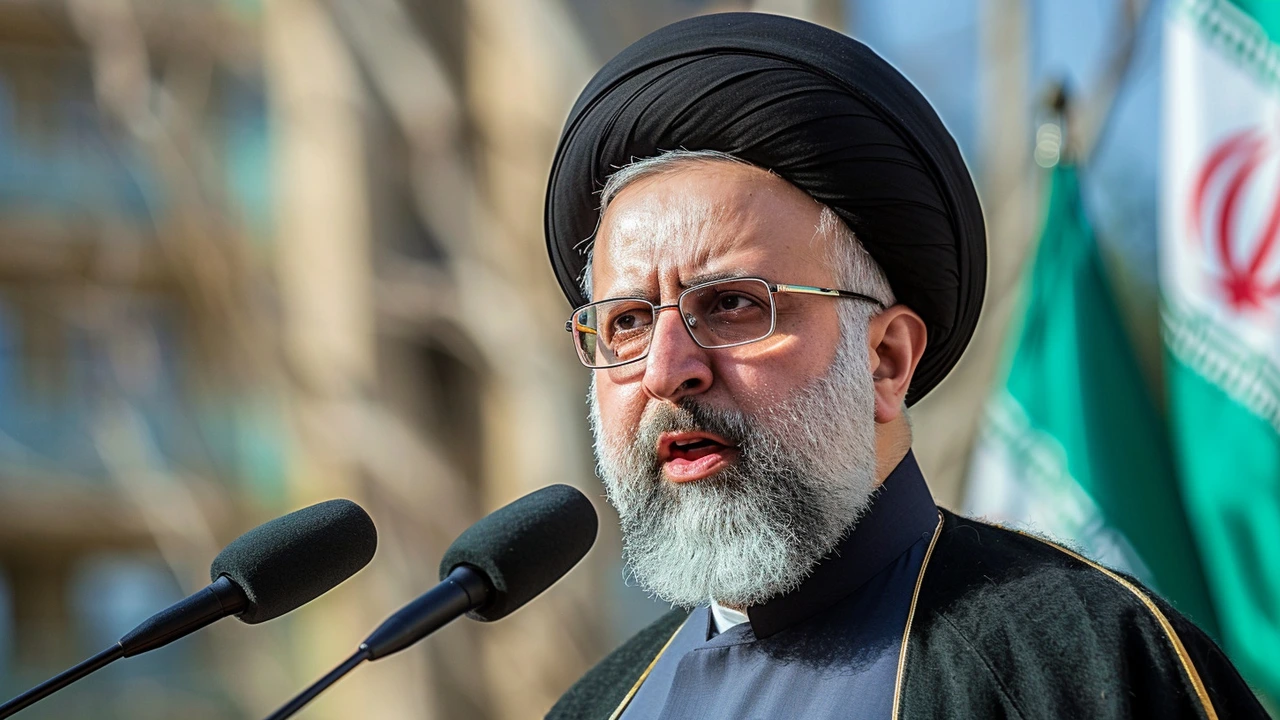Iran Rules Out Sabotage in Raisi's Fatal Helicopter Crash Amid Ongoing Probe
In a tragic event that has left the nation grieving, Iran's military has confidently announced that there is no evidence suggesting foul play in the helicopter crash that led to the death of President Ebrahim Raisi and seven other passengers. The catastrophic incident took place on Sunday in Iran's rugged northwest, an area known for its challenging terrain.
President Raisi was returning from the inauguration of a new dam located near the Azerbaijani border. The crash has sparked widespread mourning across the nation as the people grapple with the sudden loss of their leader. Initial findings by the general staff of the armed forces indicated that the helicopter did not show any signs of being attacked. There were no bullet holes, and other forms of possible impacts were absent from the wreckage.
The preliminary report unveiled more about the circumstances surrounding the accident. According to the information released, the helicopter encountered problems after it collided with an elevated area, which subsequently led to a fire. Crucially, investigators found nothing unusual in the communications between the helicopter's flight crew and the watchtower, further supporting the theory of an accident devoid of malicious actions.
Additionally, the helicopter was traveling along a pre-determined flight path and did not deviate from this route prior to the crash. This detail is significant as it rules out the possibility of diversion due to potential threats or malfunctions. The wreckage, later discovered by Iranian drones on Monday, presented a grim scene.
The search and rescue operations faced tremendous obstacles. The complex and harsh geography of the crash site, combined with adverse weather conditions like thick fog and low temperatures, made the mission extremely challenging for rescue teams. These factors significantly delayed the recovery and initial analysis of the wreckage.
Despite these difficulties, the army assured the public that the investigation is ongoing and that more precise details would be divulged as they become available. The nation awaits these findings, hoping they will bring some closure to this tragic event.
President Raisi was laid to rest on Thursday in his hometown of Mashhad. The funeral proceedings stretched over several days, with ceremonies taking place in major cities, including the capital where large crowds of mourners gathered to pay their final respects. The sorrowful atmosphere was palpable as people from all walks of life came together to honor their late president.
The crash also claimed the life of Foreign Minister Hossein Amir-Abdollahian, a significant figure in Iran's government. His burial took place on Thursday in Shahre Ray, a town situated south of the capital. The loss of Amir-Abdollahian adds another layer of grief to the already somber mood of the nation.
As the country mourns, the government emphasizes the importance of thoroughly understanding the cause behind the crash. Ensuring that every detail is examined meticulously will not only honor the memory of the deceased but also help in implementing safety measures to prevent such incidents in the future.
For now, the focus remains on the ongoing investigation. The general staff of the armed forces continues to analyze the helicopter’s components and the circumstances surrounding the crash. The public and international observers are keenly waiting for the final report. As these events unfold, the world watches closely, offering condolences and support to a nation in mourning.
The untimely demise of President Raisi has left an indelible mark on Iran’s political and social landscape. As citizens and leaders come together to navigate this period of sorrow, the memory of Raisi’s service and dedication to his country will undoubtedly remain a poignant chapter in Iran’s history.

Write a comment